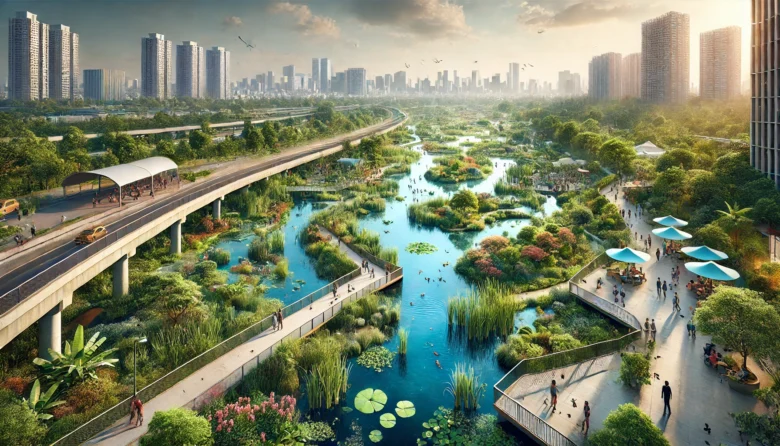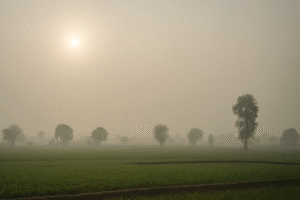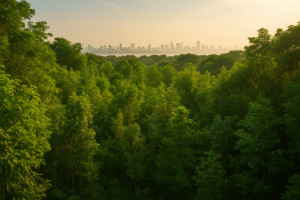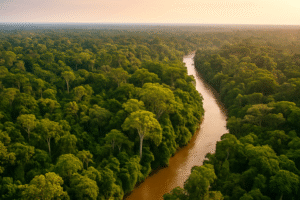Urban wetlands are not just picturesque spots in our cities; they are vibrant ecosystems that play a unique and crucial role in the Indian urban landscape. In this blog, we’ll delve into the diverse ecosystem services of urban wetlands, going beyond their role in flood control, and explore why they are so vital for Indian cities.
The Hidden Treasures of Urban Wetlands
When we think of wetlands, the first thing that comes to mind is often their ability to control floods. While this is a critical function, urban wetlands offer many other equally important benefits. These ecosystems are essential for maintaining ecological balance, promoting biodiversity, and enhancing the quality of urban living.

Biodiversity Hotspots in Concrete Jungles
Urban wetlands are biodiversity hotspots. They serve as habitats for numerous plant and animal species, including some that are rare or endangered. These wetlands are sanctuaries for birds, insects, fish, and plants in cities like Mumbai, Delhi, and Kolkata. For example, the East Kolkata Wetlands, a recognized Ramsar site, is home to many species that play a vital role in the region’s ecological health.
Natural Water Purifiers
Wetlands act as natural water purifiers. They filter pollutants from surface runoff, improving water quality. This is particularly beneficial in Indian cities where water pollution is a significant issue. The wetlands absorb and break down pollutants, including heavy metals, pesticides, and pathogens, thus ensuring cleaner water bodies.
Climate Regulation and Carbon Sequestration
Urban wetlands help regulate the local climate by moderating temperatures and increasing humidity. They are also significant for carbon sequestration, as they capture and store carbon dioxide from the air. This contributes to mitigating climate change effects, thereby increasing the resilience of our cities.
Recreational and Educational Spaces
Wetlands offer recreational opportunities and serve as natural classrooms. They provide serene spaces for bird watching, photography, and educational tours. In cities like Bangalore and Chennai, wetlands have been integrated into urban planning as public parks, enhancing the quality of life for residents.
Supporting Livelihoods
In many parts of India, urban wetlands support local livelihoods. They are sources of fish, reeds, and other natural products that communities rely on. For example, the livelihoods of fishermen in the wetlands of Kerala and West Bengal are directly tied to the health of these ecosystems.
Enhancing Aesthetic and Cultural Values
Urban wetlands also add to the aesthetic and cultural value of our cities. They are often sites of cultural significance and community gatherings, enhancing the beauty of our urban landscapes. Preserving these areas is not just about conservation but also about maintaining our cities’ cultural heritage and natural beauty.
The Need for Conservation and Sustainable Management
Despite their numerous benefits, urban wetlands are under threat from urbanization, pollution, and encroachment. To protect these vital ecosystems, we need to adopt sustainable management practices. This includes implementing strict regulations to prevent pollution but also encouraging community participation in conservation efforts. Each of us has a role to play in preserving these natural treasures.
Steps We Can Take
Awareness Campaigns: Raising public awareness about the significance of wetlands and the benefits they provide.
Community Involvement: Engaging local communities in wetland conservation and management.
Policy Implementation: Enforcing laws and regulations to protect wetlands from encroachment and pollution.
Restoration Projects: Initiating projects to restore degraded wetlands and enhance their ecological functions.
Conclusion
Urban wetlands are invaluable assets that provide a wide range of ecosystem services beyond flood control. They enhance biodiversity, purify water, regulate climate, offer recreational opportunities, support livelihoods, and enrich our cultural and aesthetic experiences. Acknowledging and conserving these natural treasures can create a healthier and more sustainable future for our urban areas.
Author’s Note:
Thank you for taking the time to learn about the incredible value of urban wetlands. Let’s work together to protect these vital ecosystems for future generations. Your comments and feedback are welcome!
G.C., Ecosociosphere contributor.




